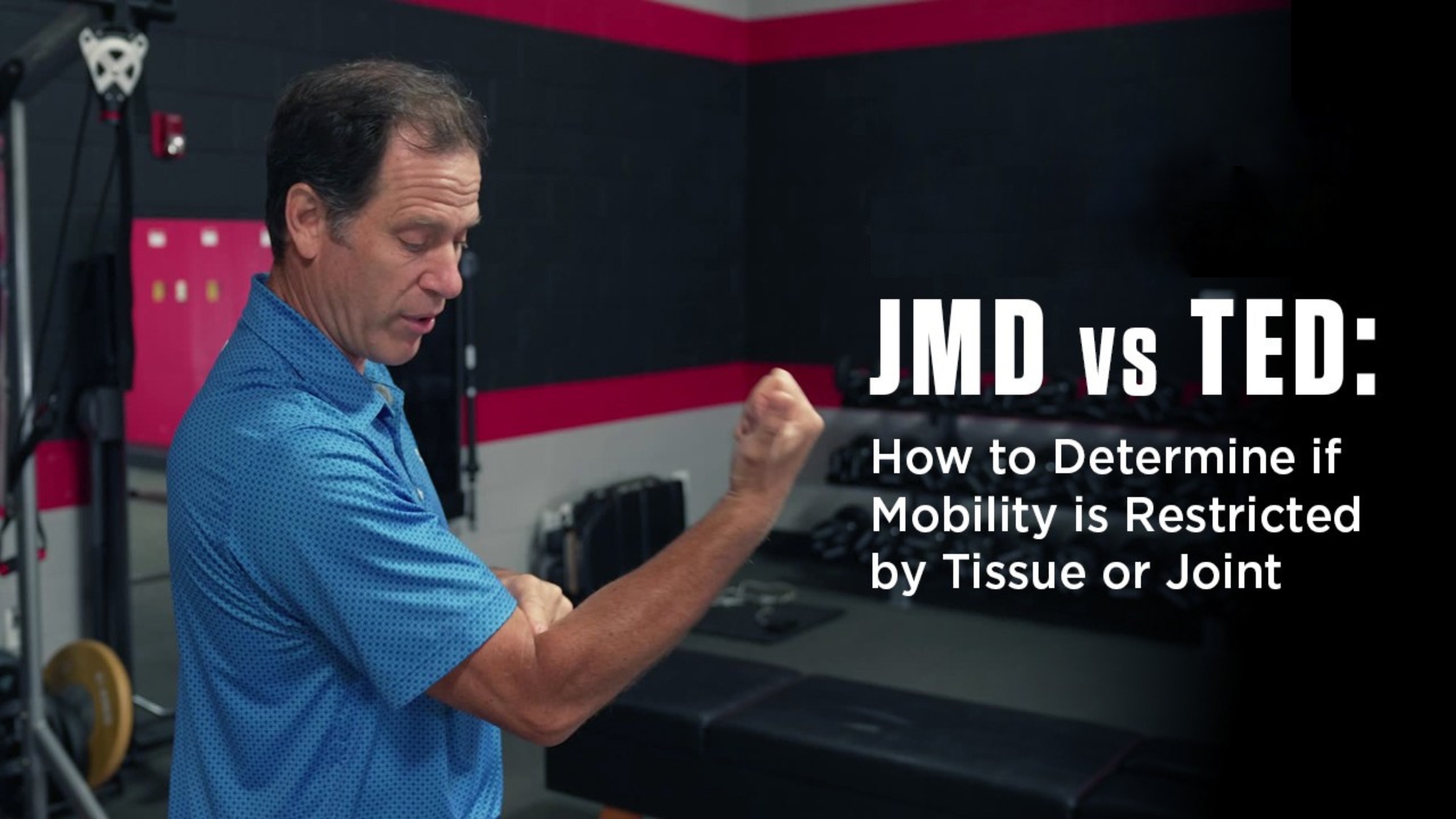IMPROVE MY GAME
Articles
Joint or Tissue? How to Differentiate Between Types of Mobility Restrictions

When training a golfer, the most important aspect of any program is that it works on the right thing. It might sound reductive, but addressing a golfer's specific needs is often what differentiates an effective golf performance program from gen pop fitness.
While many golfers will have similar needs in terms of strength, power, and mobility, their limitations can be unique. For example, two golfers might complain of tight hips, but one could have limited internal rotation and the other limited external rotation. The same complaint might not merit the same program.
This is one of the reasons why we screen. If a golfer passes the 90/90 Test, they probably don’t need a lot of exercises to improve shoulder external rotation. If they fail it, they do!
Furthermore, an experienced fitness or medical professional isn't always finished with their assessment once the Level 1 screen is complete. Identifying a limitation in mobility is critical, but we don't always know what is causing it.
Understanding this is crucial for effective programming.
After all, strategies for improving ankle mobility might be drastically different if it’s limited by joint or limited by tissue. If the joint is affecting freedom of movement, a calf stretch probably won't produce improvement.
For this reason, we classify mobility limitations as Tissue Extensibility Dysfunction (TED) vs Joint Mobility Dysfunction (JMD).
Here’s Dr. Rose in our Fitness Level 2 course:
Flexibility suggests that stretching is a solution whenever range of motion is limited, but qualified fitness and medical professionals know that isn’t the reality.
As Jason Glass says, “Stretching everything that feels tight is like playing Battleship with your body. You might get lucky with a positive outcome, but it's a blind guess.”
If we accept that interventions for TED’s should be different than JMD’s, it begs the question: how can we differentiate between the two? While there are no ultimatums, there are several strong indicators that we cover in our advanced Fitness and Medical courses. Dr. Rose explains:
Though we share some of our favorite strategies for treatment and training in our advanced Fitness and Medical courses, as a company we’re pretty agnostic to the where the “corrective” comes from. Whether your preference is S&C, pilates, yoga, breathwork, or manual therapy, the most important thing is that you're attacking the right thing. The better our diagnosis, the more effective the intervention.
For more information on our advanced Medical or Fitness tracks, visit the course overview page on our site.